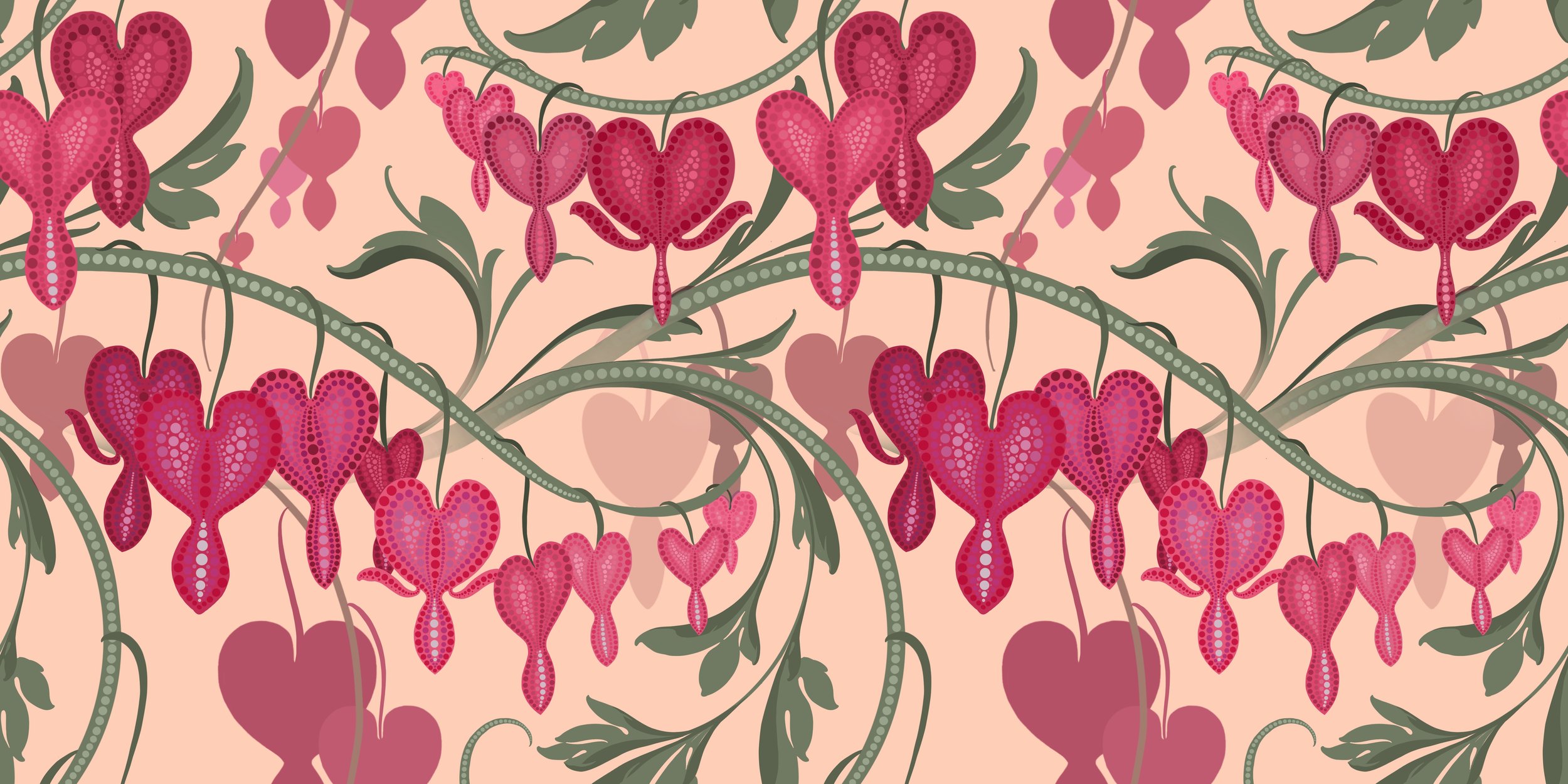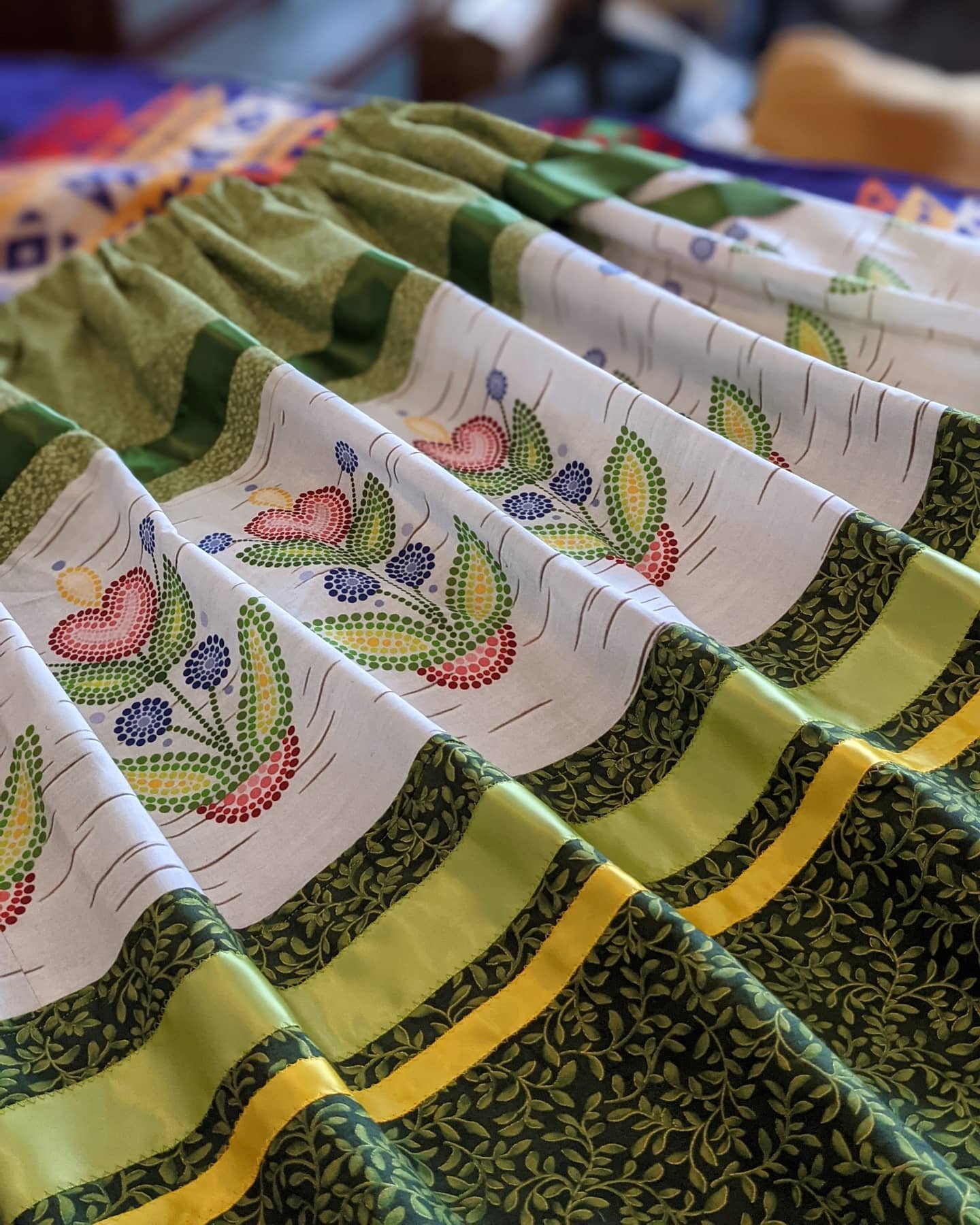
Kaija Heitland and Indigenous Nouveau

My name is Kaija Heitland and I am a Métis and Scandinavian woman living on Vancouver Island, on the traditional lands of the Cowichan tribes. I belong to the Cowichan Valley Métis Community, and I am a card-carrying Métis citizen of MNBC (Métis Nation British Columbia).
I hunt, gather and participate actively in my community, teaching Métis fiddle and traditional art skills but never forgetting the rich Northern European heritage I also belong to. The Métis side of my family comes from the Hodgson lines out of the Red River. My people moved originally from Fort Albany and their occupations with the Hudson’s Bay Company and Northwest Company and then to the Red River, Ottawa River Valley (Lac les Chats) and then onto Thunder Bay to this day, where my family flourished, married into the Frost and Haavisto (Sami) family and continuing their land-based practices as trappers, hunters and loggers. They raised their mixed children in poverty but with wholesome, traditional beliefs and practices that respected both their Indigenous and Scandinavian roots. To the best of knowledge, our family never spoke Michif, but English, French, Cree, Oji-cree and Finnish due to their kinship and regional ties.
While I am not only Métis, but a representation of many different peoples, I do my best to respect and honour all of them and the richness of their art and culture and not tokenize any aspect of my heritage.
I actively make an effort to not take up space or opportunities belonging to First Nations or Inuit Individuals, and do not apply for Non-Métis or non-widely-Indigenous programs, grants, contests or opportunities. It is a small effort on my part to ensure that the resources that I have access to have been specifically allocated to the preservation, sharing and development of Métis material culture and do not contribute to the reduction in opportunities for First Nations or Inuit artists and people.
My lineage is also Sami (Indigenous peoples of the Northern parts of Scandinavia and the Steppes), Scandinavian and German, which I draw inspiration from in the work that I do. I try to create a real representation of who I am as an individual and as a mix of all of my heritage rather than one specific aspect on its own. I like to think of how I use the language of Métis beadwork and the vocabulary of Scandinavian and Northern European design to tell the story of all the people I come from.
Growing up in a proud Métis and Northern European family, I was born in Thunder Bay and grew up on the Sunshine Coast in B.C. and was surrounded by hunting, fishing, beadwork and sewing my whole life. I have been fortunate enough to support myself and my family with the skills I have learned from both of the communities that I lived-in growing up.
I have been professionally doing graphic design for 12 years, tattooing for over 18, as well as a lifetime pursuing my traditional skills in beadwork and quillwork and the connections that they have to land-based practices. I am also a silversmith and I focus on using teeth and claws, by-products of Indigenous Hunting traditions, to create one-of-a-kind pieces for my clients while highlighting the need for Indigenous voices in the dialogue for conservation and wildlife management and Indigenous food sovereignty.
Being a fiddler since the age of 5, I teach traditional Métis fiddling at our office in Duncan and we are always looking for new students to join our group! Please contact me at info@indigenousnouveau.com for more information.
I began my company, Indigenous Nouveau, as a platform to help to facilitate a greater visibility for my community and the Métis who reside in British Columbia, to showcase our unique beadwork and quillwork patterns, arts culture and history. We are experiencing a renaissance in both our appreciation and our approach to our traditional arts and I find that truly exciting. We, as a culture, are waking up and feeling our strength and vitality and it is wonderful to see that expressed in the art and music being created presently.
For more information about me and my company Indigenous Nouveau, please visit https://www.indigenousnouveau.com

A statement on my writing and the project:
I want to create something good with this.
Something for others to share in.
To connect to.
I do not want to claim anything for my own, or claim to represent the entire Métis community with this work. I believe that my work is bigger than myself. My hope with this project is that I can be a voice for the Métis who are looking for their roots and don’t know where to start. The ones that are disconnected or lost. Isolated or alone. The ones yearning for community. This work only represents those who connect to it.
I am an artist, and what I do is create art. I use art communication to connect people and sharing tools to encourage personal reclamation. I hope that some are empowered by it this work.
I do not discriminate with Métis of any area, region or lineage. I am not a gatekeeper and that is for regional governments to decide upon. Even though I am of Red River Métis descent, my only goal in his project is inclusion.
Maarsii,
Kaija

“Nordic Flowers” Ribbon Skirt - Indigenous Nouveau, with in house designed fabric, 2021.
Why the Ribbon Skirt? My personal journey.
My first real Sweatlodge Ceremony when I was 14. Surrounded almost entirely by strangers and lost in search for my identity, I was invited into something I hadn’t been prepared for. I had never been to this kind of ceremony before: This hadn’t been part of my upbringing. While I had been brought up with other traditions, land-based practices and stories, Sweatlodge was not one of them.
I didn’t have a Ribbon Skirt of my own, and the Cree man (a now lifelong friend) who was pouring the sweat, gave me his ribbon blanket to pin around my waist to cover all the way to my ankles. He told me it was so that the Earth would recognize me, so that She would know who was touching her, but that out of respect, It must cover me all the way. I told him that I felt uncomfortable since I was “The least native person there.”, and he laughed and asked if I really thought that mattered.
“She knows who and what you are.”
The skirt, the smoke, the prayers, the protocol, the inclusion, the order in which we took our turns to pray, the rounds of grandfathers from the fire, all formalized something that had always been present in my life, but not tangible in this way.
I had always had a strong connection with nature but never considered our relationship as something so formal. Something with so many rules. But this was my introduction into ceremony. And there was beauty and connection there in that formality. Respect. Undersanding. Protocol.
I was fascinated by this piece of simple clothing that had transformed me into how I saw myself. How I felt about myself. And not how others saw me.
And this is why I make Ribbon Skirts for others. So that they can feel that connection.
Inclusion.
Reclaimation.

If you would like to learn more about Indigenous Nouveau, my fabrics and the projects I am currently working on please follow the link below. For a full biography, credentials, CV and information about the Métis in British Columbia.

